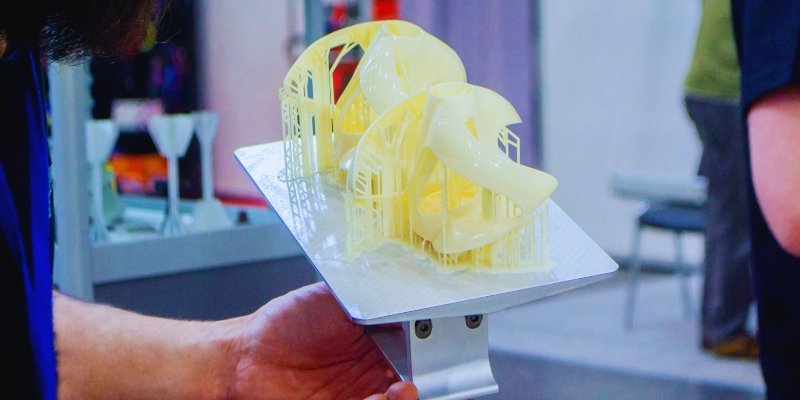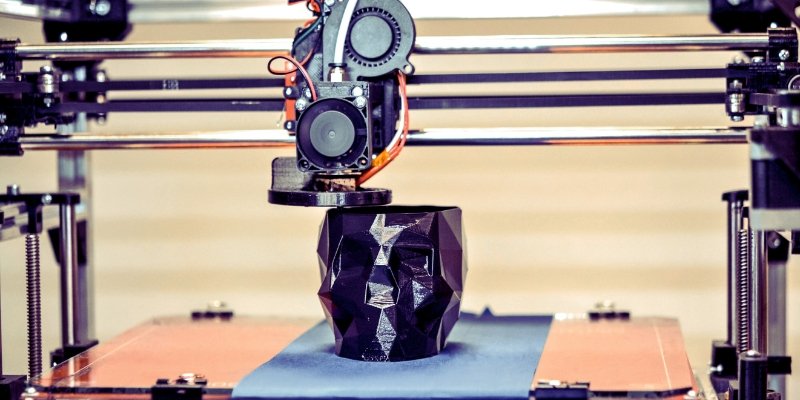Establishing a 3D Modeling and Printing Service Business in Singapore: A Guide for Aspiring Entrepreneurs

In the age of digital innovation, 3D modeling and printing have emerged as transformative technologies, enabling businesses to create prototypes, custom products, and intricate designs with remarkable precision. Singapore, known for its robust tech ecosystem and supportive government policies, presents a fertile ground for aspiring entrepreneurs looking to establish a 3D modeling and printing service business. This guide will explore the essential steps, reasons, challenges, and financial considerations for launching a successful venture in this dynamic field.
Reasons to Start a 3D Modeling and Printing Service Business

There are several compelling reasons to consider starting a 3D modeling and printing service business:
Increasing Demand Across Industries: Various sectors, including manufacturing, healthcare, architecture, and education, are increasingly adopting 3D printing technology. This growing demand opens up numerous opportunities for service providers.
Innovation and Customization: 3D printing allows for the creation of highly customized products that traditional manufacturing methods cannot easily achieve. This capability positions your business to cater to niche markets and specific client needs.
Government Support and Initiatives: The Singaporean government actively promotes technology adoption through initiatives like the Industry Transformation Programme. This support can provide resources and funding opportunities for new businesses in the tech sector.
Sustainability Focus: 3D printing can reduce material waste and promote sustainable practices in manufacturing. By emphasizing eco-friendly solutions, your business can appeal to environmentally conscious clients.
Detailed Steps to Establish a 3D Modeling and Printing Service Business

Starting a 3D modeling and printing service business involves several key steps:
Market Research: Begin with thorough market research to understand the current landscape of 3D modeling and printing in Singapore. Identify your target audience, including industries that could benefit from your services, and analyze their specific needs.
Business Plan Development: Create a comprehensive business plan outlining your vision, mission, target market, service offerings, marketing strategies, and financial projections. A well-structured plan will serve as a roadmap for your business and help attract potential investors.
Legal Requirements: Register your business with the Accounting and Corporate Regulatory Authority (ACRA) in Singapore. Ensure compliance with regulations related to intellectual property, data protection, and health and safety standards relevant to 3D printing.
Technology Acquisition: Invest in high-quality 3D printers and modeling software that meet industry standards. Consider the types of materials you will use, such as plastics, metals, or biodegradable options, and ensure your equipment can handle them.
Service Development: Define the range of services your business will offer, such as 3D modeling, rapid prototyping, product design, and printing services. Tailor your offerings to meet the specific needs of your target audience.
Staffing: Hire skilled professionals with expertise in 3D modeling, design, and printing. Training your staff on the latest technologies and software will enhance your service quality and efficiency.
Marketing Strategy: Implement a robust marketing strategy to promote your 3D modeling and printing service business. Utilize online channels, social media, and industry events to raise awareness and engage potential clients.
Launch: Plan a launch event or campaign to introduce your services to the market. Use this opportunity to showcase your capabilities, network with potential clients, and build relationships with industry professionals.
Challenges and Considerations for Both Local and Foreign Entrepreneurs

While launching a 3D modeling and printing service business is promising, there are challenges to be aware of:
Regulatory Compliance: Navigating the legal landscape for 3D printing can be complex. Ensure that you understand all relevant regulations, including those related to intellectual property rights and product liability.
High Initial Investment: Acquiring high-quality 3D printers and software can require significant capital investment. Careful financial planning is essential to manage these costs effectively.
Technological Advancements: The 3D printing industry is rapidly evolving, with new technologies and materials emerging regularly. Staying current with these advancements is crucial for maintaining a competitive edge.
Market Competition: The 3D modeling and printing sector is becoming increasingly competitive, with numerous startups and established companies offering similar services. Differentiate your business by providing unique solutions, exceptional customer service, or specialized expertise.
Consumer Education: Many potential clients may not fully understand the benefits of 3D modeling and printing. Educating your target audience through workshops, webinars, and informative content can help build trust and credibility.
Financial Planning Aspects

Effective financial planning is essential for the sustainability of your 3D modeling and printing service business. Here are key aspects to consider:
Startup Costs: Estimate your initial investment, including equipment, software, legal fees, marketing, and operational expenses. Understanding your financial requirements will help you secure funding and manage cash flow effectively.
Revenue Model: Determine your pricing strategy and revenue model. Common models in the 3D printing industry include project-based pricing, hourly rates for design services, and subscription models for ongoing services.
Operating Expenses: Calculate ongoing costs such as salaries, materials, maintenance, marketing, and utilities. A well-structured budget will help you manage expenses and ensure profitability.
Funding Options: Explore various funding options, including personal savings, bank loans, venture capital, and government grants tailored for technology startups in Singapore.
Conclusion
Establishing a 3D modeling and printing service business in Singapore is a promising venture that aligns with the growing demand for innovative solutions across various industries. By following the outlined steps and being mindful of the challenges, you can create a successful business that contributes to the advancement of technology and design.
If you are ready to embark on this exciting journey, start by developing your business plan today. For more guidance and support in your entrepreneurial journey, contact Company Formation Specialist. We are here to help you navigate the complexities of setting up your business in Singapore and turn your vision into reality!
Frequently Asked Questions
1. What are the reasons to start a 3D modeling and printing service business in Singapore?
Answer: There are several reasons to consider starting a 3D modeling and printing service business in Singapore, including increasing demand across industries like healthcare, manufacturing, and architecture, opportunities for innovation and customization, government support, and the sustainability benefits of 3D printing.
2. What industries can benefit from 3D modeling and printing services?
Answer: Industries such as manufacturing, healthcare, education, architecture, and design can significantly benefit from 3D modeling and printing services. These industries use 3D printing for prototypes, customized products, and innovative solutions.
3. What are the first steps to take when starting a 3D modeling and printing service business?
Answer: The first steps include conducting market research, developing a comprehensive business plan, registering the business with ACRA, acquiring the necessary technology, defining services, hiring skilled staff, and implementing a marketing strategy.
4. What are the legal requirements for starting a 3D modeling and printing service business in Singapore?
Answer: To start a 3D modeling and printing service in Singapore, you need to register your business with ACRA. Additionally, ensure compliance with intellectual property laws, data protection regulations, and health and safety standards related to 3D printing.
5. What equipment and technology do I need to start a 3D modeling and printing business?
Answer: You will need high-quality 3D printers, modeling software, and a variety of printing materials such as plastics, metals, or biodegradable options. Ensuring your equipment is industry-standard is crucial for quality service.
6. How much does it cost to start a 3D modeling and printing service business in Singapore?
Answer: The initial investment can be high due to the cost of 3D printers, software, legal fees, and other startup costs. A well-prepared financial plan is necessary to estimate these costs and secure funding.
7. What are the challenges of starting a 3D modeling and printing service business in Singapore?
Answer: Challenges include regulatory compliance, high initial investment, keeping up with technological advancements, market competition, and educating consumers about the benefits of 3D printing.
8. What types of services can I offer with a 3D modeling and printing business?
Answer: You can offer services such as 3D modeling, rapid prototyping, product design, and 3D printing for various industries. Tailor your offerings to meet specific needs such as custom designs or prototypes for clients.
9. How can I differentiate my 3D modeling and printing service business from competitors?
Answer: You can differentiate by offering specialized expertise, exceptional customer service, unique design solutions, or a focus on sustainable practices. Building a strong reputation and trust in the industry is key to standing out.
10. What funding options are available for starting a 3D modeling and printing service in Singapore?
Answer: Funding options include personal savings, bank loans, venture capital, and government grants available for tech startups. Exploring various funding routes can help you secure the capital needed to get started.

